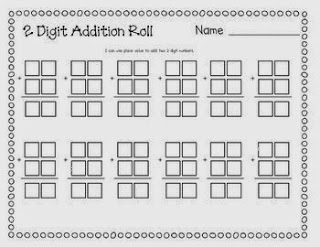After having had a year of learning and experience within the MED Teaching and Learning program I was reaffirmed in many of my Children's Principles of Learning that I set for myself last year. I, of course, have been able to add to those principles as well.
Principle 1: A Safe Environment
Students must
feel that they are physically and emotionally safe in an environment in order
to blossom in it. They first must physically
safe before you can ever expect them to worry about their learning. Constructivist
research also supports that students playing a role in the physical layout of the classroom is very
beneficial as well. While physical safety is important, as is knowing that they
can freely share ideas without being judged or having the fear of failure
restrain them from trying. My summer research on best practices of writing has
provided many examples of how providing this safety can increase self-esteem
and abilities as a writer.
Principle 2: Sounds Relationships
No matter the
student’s background, they must feel a connection to their teacher in order to
have a passion to learn. If they don’t trust the instructor, they will find it
very difficult to trust that what is being presented has a purpose. Students
need not to just know that we care
for them and their learning, but to feel
that we do. It is these sound relationships that stick with them through their
schooling “careers.” As I researched best practices in writing, as well as the
Lasillian Concepts, I was reaffirmed that relationships are key between teacher
and students, as well as amongst the students themselves.
Principle 3: Sequencing of content
In order for a
student to feel successful within a lesson, unit, or school year, content must
be scaffolded in a way that they can succeed. The philosophy of explicit
instruction is formatted as such: “I do, we do, you do.” Knowing your students
and being able to gauge when they need more “I do” or “we do” before being able
to get to the “you do” is crucial. Setting students up for success by
sequencing content and processes will help them see that they can succeed. Having
learned more about designing units in a “backwards format,” that is, starting
with the big picture in mind…the “what do I want all students to know” and then
using what they already know to guide your lessons has proven to be very beneficial
when sequencing content and helping students to grasp the big ideas.
Principle 4: Reflection
No matter their
age, students should be given multiple opportunities to reflect on their
actions and learning. They grow more when they are able to “score” themselves
in a situation. Reflection causes the students to take a moment to truly think
about their learning and how they were successful, or not, and how to continue
or improve the next time. The writing process is a key example of a time in
which students have multiple opportunities to reflect on different aspects of
their writing as they’re constantly revising after having been presented with
examples and mini-lessons on what good writing looks like.
Principle 5: Ideas, feelings, actions
Students need to
be able to connect some schema, feeling or action to their learning in order
for it to stick. Lessons that are remembered are often tied to some sort of
auditory or kinesthetic cue that help trigger a certain muscle memory or emotion.
Backwards Design also helps to students to make connections to bigger, umbrella
concepts, as well as seeing connections amongst “separate” curricular
activities throughout the idea.
Principle 6: Immediacy
But WHY??
Students must know why what they’re learning is important and how
they’ll be able to use it in their own lives. By starting a lesson with a goal,
stating why or how we’ll use it, and allowing students to make connections to
their own lives, they are more motivated to learn and use the content again. Again,
this is supported when using a Backwards Design model.
Principle 7: Teamwork
Two minds are
better than one. This is a very simple, but true statement. Most students are
very social learners and like to be
able to discuss what they’re learning about or what they already know. By
allowing students to work in small groups we are opening up the possibility of
creative thinking, coming to conclusions more efficiently, and developing
problem solving skills. I was privileged to attend a very beneficial class on
cooperative groups this summer that provided me with a multitude of examples
that encourage cooperative learning. One example given is called “Numbered
Heads Together” in which students work in small groups to collect information,
solve problems, check work, etc. The teacher then calls on a random student
within each group to provide an answer. Having had that team support prior to
being asked to speak for themselves helps all students to be successful.
Principle 8: Engagement
Students must be
engaged in the content in order for it to stick. It is important to “tap into”
the various learning styles of your students in order to best address their
learning needs. When a student is engaged in the lesson and content they are
more likely to tie an emotion and connection to it making it more likely for
them to remember and utilize what they’ve learned.
Principle 9: Have fun!
With the many
stresses that nationwide testing and standards can put on classrooms and the
teachers and students within them, it’s important that the learning environment
still be fun! After much reflection of my own schooling, it’s the experiences I
had and relationships I made that I remember most…not the algorithms I
“learned” in algebra. This has been
reaffirmed through my experiences with community building activities in class.
I see the strong benefits of having fun to build community amongst a group of
learners.






